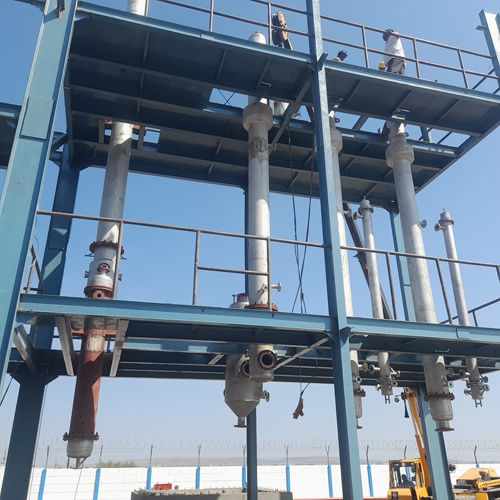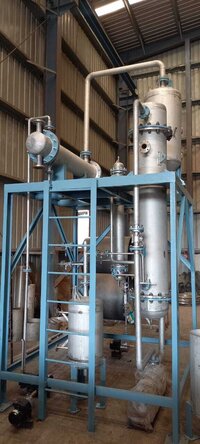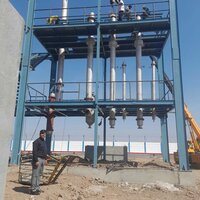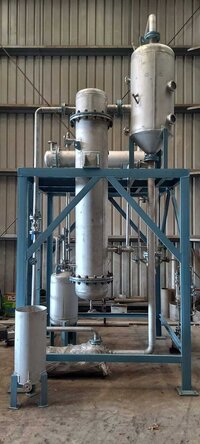जीरो लिक्विड डिस्चार्ज प्लांट
2200000 आईएनआर/Number
उत्पाद विवरण:
- क्षमता किलोलीटर/दिन
- मटेरियल SS304
- एप्लीकेशन RO Reject Feed
- प्रॉडक्ट टाइप
- टेक्नोलॉजी ZLD by STEAM or ELECTRIC HEATING
- पावर सोर्स AC
- ऑपरेशन का प्रकार
- अधिक देखने के लिए क्लिक करें
X
जीरो लिक्विड डिस्चार्ज प्लांट मूल्य और मात्रा
- नंबर
- नंबर
- 1
जीरो लिक्विड डिस्चार्ज प्लांट उत्पाद की विशेषताएं
- 1
- SS304
- किलोग्राम (kg)
- Smoke Grey
- RO Reject Feed
- बार
- मिलीमीटर (mm)
- ZLD by STEAM or ELECTRIC HEATING
- किलोलीटर/दिन
- AC
जीरो लिक्विड डिस्चार्ज प्लांट व्यापार सूचना
- एफओबी जेएनपीटी
- , ,
- 4 प्रति सप्ताह
- 5 हफ़्ता
- Yes
- डिब्बा
- , ,
- आईएसओ
उत्पाद वर्णन
1. What is Zero Liquid Discharge (ZLD)?
- Zero Liquid Discharge (ZLD) is a wastewater treatment process that ensures all water is recovered and contaminants are reduced to solid waste, leaving no discharge of liquid effluent into the environment.
2. Why is ZLD important?
- ZLD is crucial for industries to comply with environmental regulations, conserve water, reduce pollution, and promote sustainable operations by recycling and reusing water within the facility.
3. Which industries typically use ZLD systems?
- Industries such as power generation, chemical manufacturing, textiles, pharmaceuticals, and mining often implement ZLD systems due to their high water usage and stringent wastewater discharge regulations.
4. How does a ZLD system work?
- A ZLD system typically involves several stages: pre-treatment (to remove large particles), filtration (to remove smaller particles), evaporation (to concentrate the wastewater), and crystallization (to convert remaining waste into solid form).
5. What are the benefits of using ZLD?
- The benefits of ZLD include compliance with environmental regulations, reduced freshwater consumption, minimization of wastewater discharge, recovery of valuable by-products, and overall enhancement of corporate sustainability.
Advanced Liquid Waste Management
Our ZLD Plant leverages sophisticated PLC controls and stainless steel construction to ensure reliable performance. Designed for industrial applications, it addresses stringent environmental standards by treating and recovering water from RO reject feeds, helping businesses achieve zero liquid discharge compliance efficiently.
Customizable and Robust Design
Engineered to accommodate varying operational needs, the plant supports customizable shafts and flexible capacities, ranging from small- to large-scale applications (up to 50 KLD). The compact, robust structure and smoke grey finish ensure durability and seamless integration into existing industrial setups.
Efficient, Energy-Conscious Operation
Utilizing advanced heatingeither by steam or electricitythe ZLD system is powered by AC motors for dependable, semi-automatic operation. The plant is optimized for energy efficiency and operational effectiveness, without needing full computerization, making it accessible and manageable for diverse users.
FAQs of Zero Liquid Discharge Plant:
Q: How does the Zero Liquid Discharge Plant operate?
A: The ZLD Plant uses an agitator mixer and PLC control to process RO reject feeds. It employs either steam or electric heating to evaporate water, ensuring that liquid waste is minimized. The water is then condensed and recovered for reuse, leaving behind only solid residues for disposal.Q: What are the main benefits of installing a ZLD Plant in industrial settings?
A: Implementing a ZLD Plant helps industries comply with environmental regulations by preventing any liquid waste discharge. It enables water recycling, reduces operational costs over time, minimizes contamination risks, and supports sustainable manufacturing practices.Q: When is PLC-controlled, semi-automatic operation advantageous?
A: Semi-automatic, PLC-controlled systems provide a balanced approach to plant management. This setup reduces manual intervention, enhances process reliability, and maintains ease of operation, making it ideal for users seeking efficient control without fully autonomous systems.Q: Where can these ZLD Plants be installed and who should use them?
A: These plants are suitable for installation in industries across India, especially those involved as distributors, manufacturers, service providers, and suppliers. Industries dealing with RO reject water or those mandated to achieve zero liquid discharge can greatly benefit from this system.Q: What process is followed for customizing shaft, capacity, and power in the ZLD Plant?
A: Customization is available according to each customers requirements. Shaft specifications, plant capacity (m/hr or up to 50KLD), power supply, and voltage are tailored during manufacture to match the users operational demands and site constraints.Q: How is the plant maintained, and what does the warranty cover?
A: Routine maintenance includes cleaning, periodic inspection of the agitator, and checking PLC systems. The plant comes with a one-year warranty covering manufacturing defects, ensuring reliability and prompt support.Tell us about your requirement

Price: Â
Quantity
Select Unit
- 50
- 100
- 200
- 250
- 500
- 1000+
Additional detail
मोबाइल number
Email














